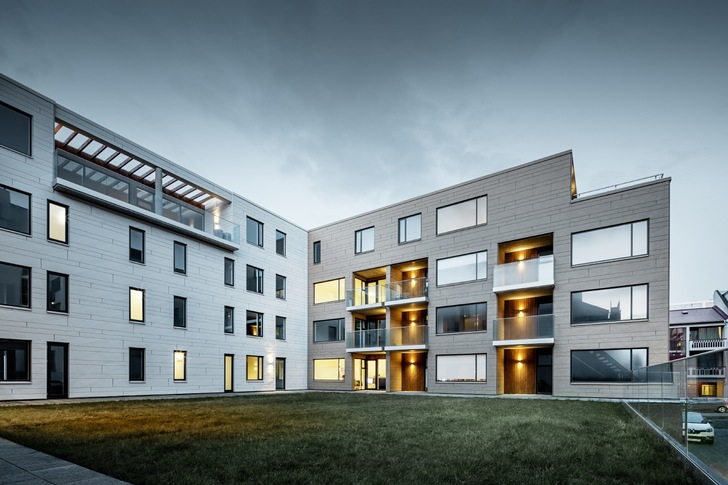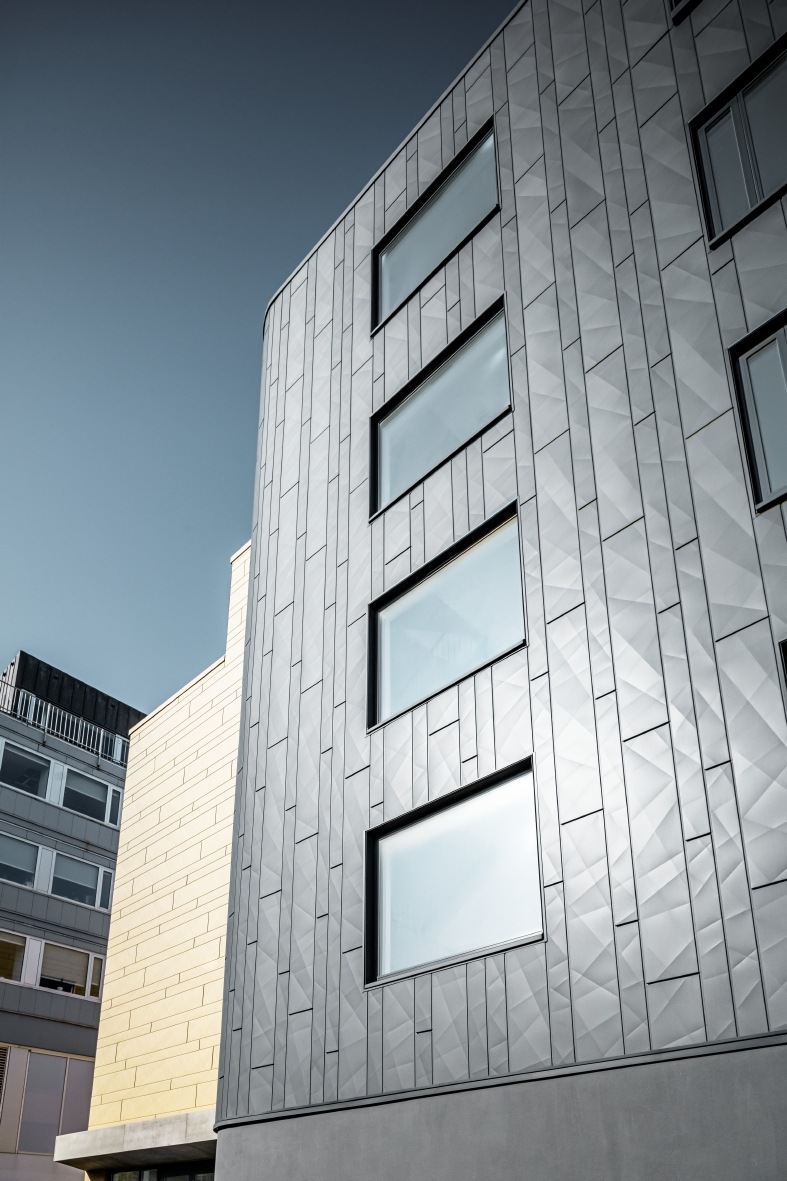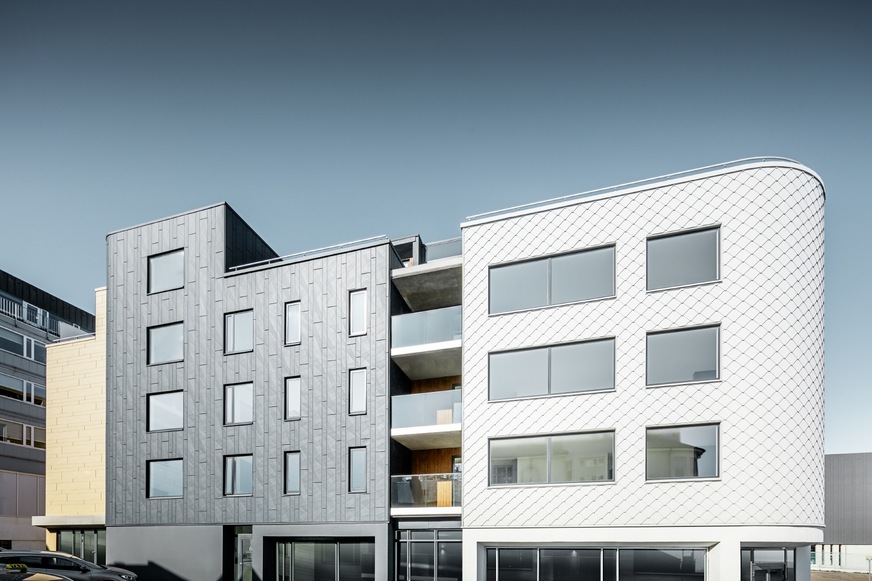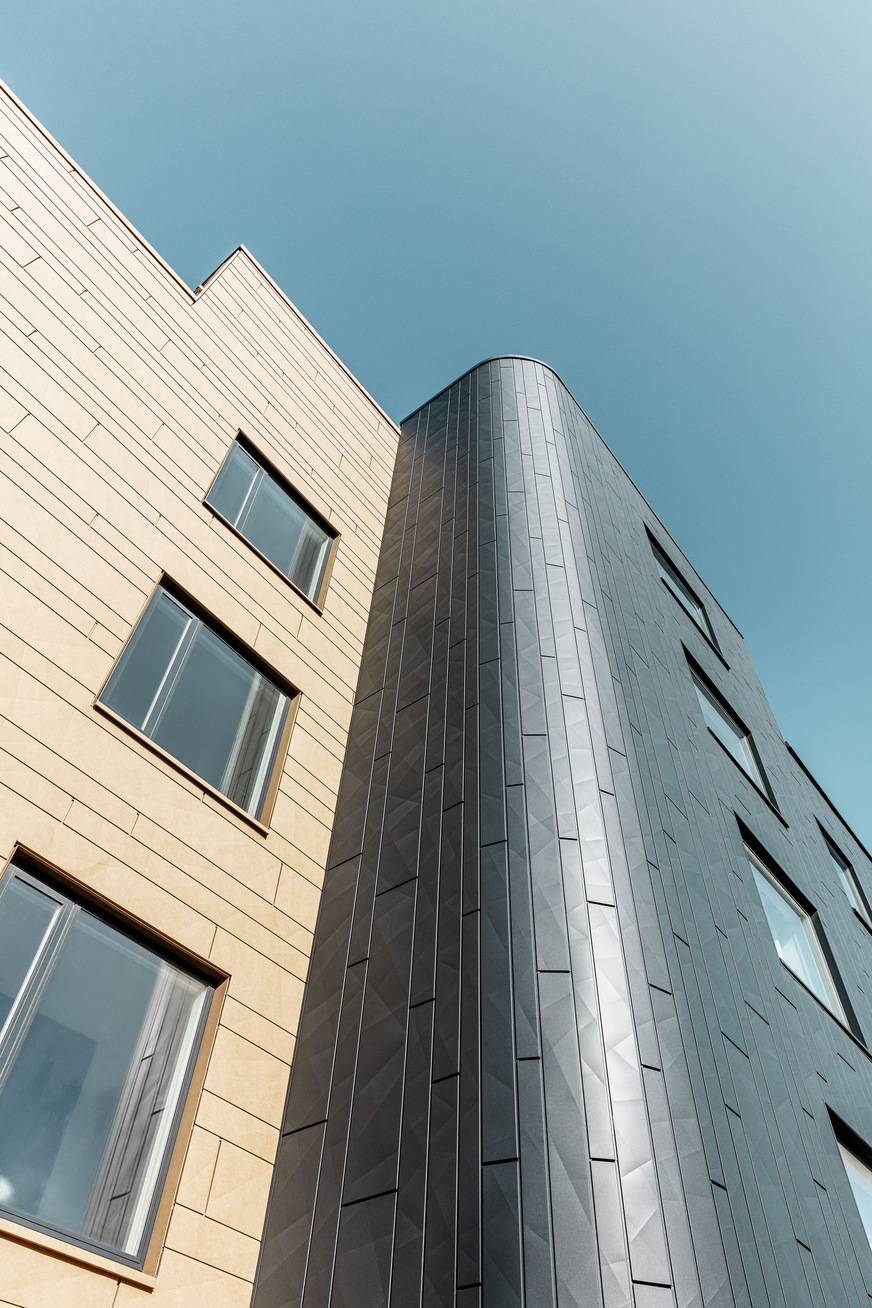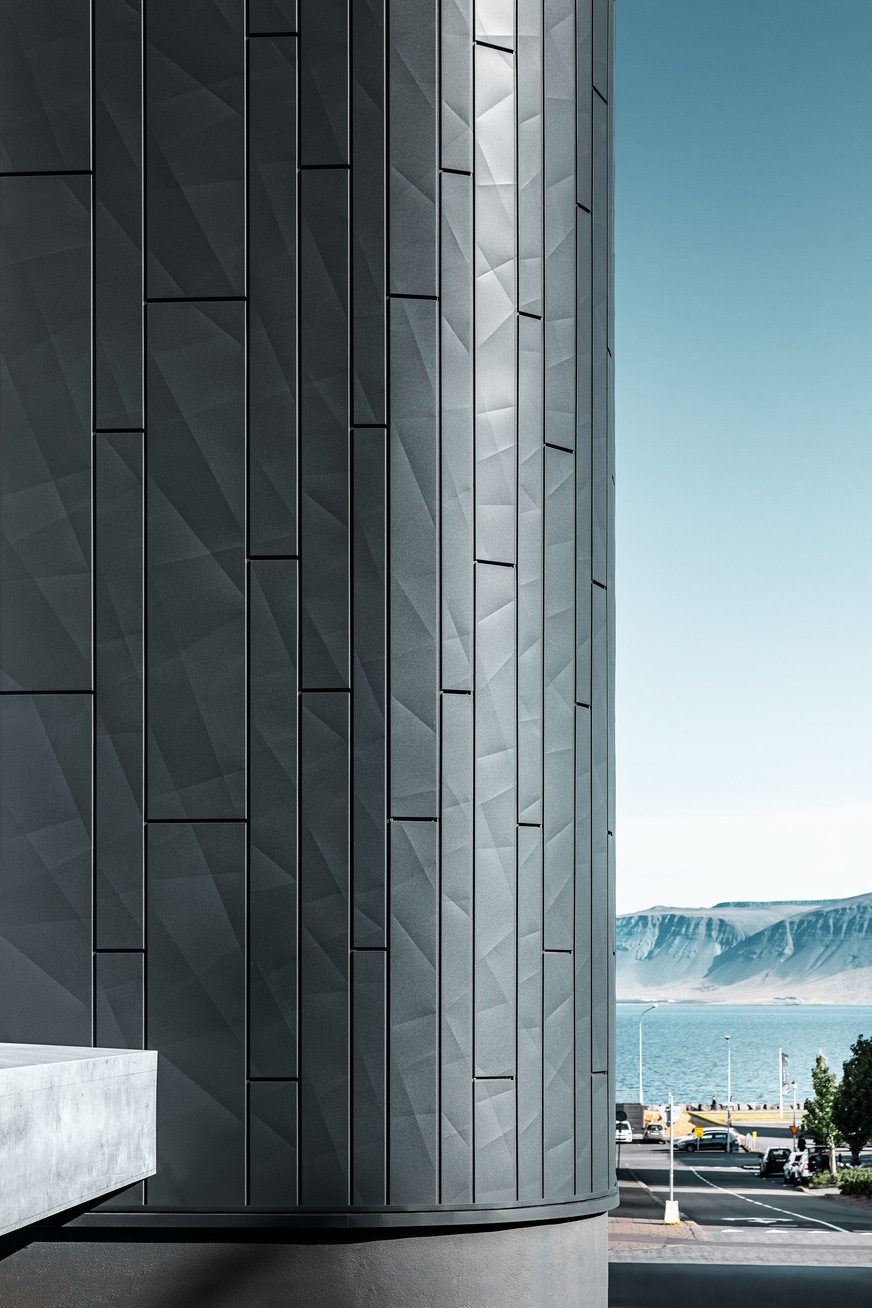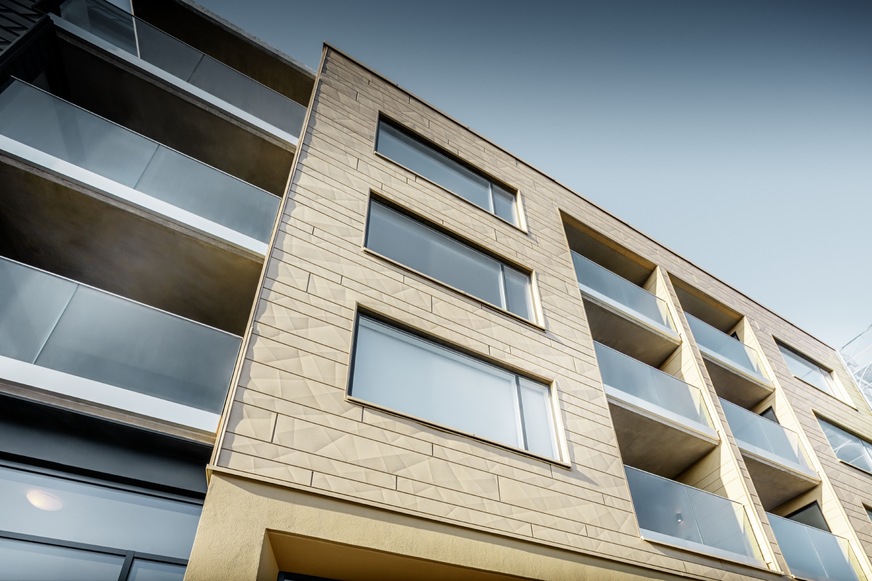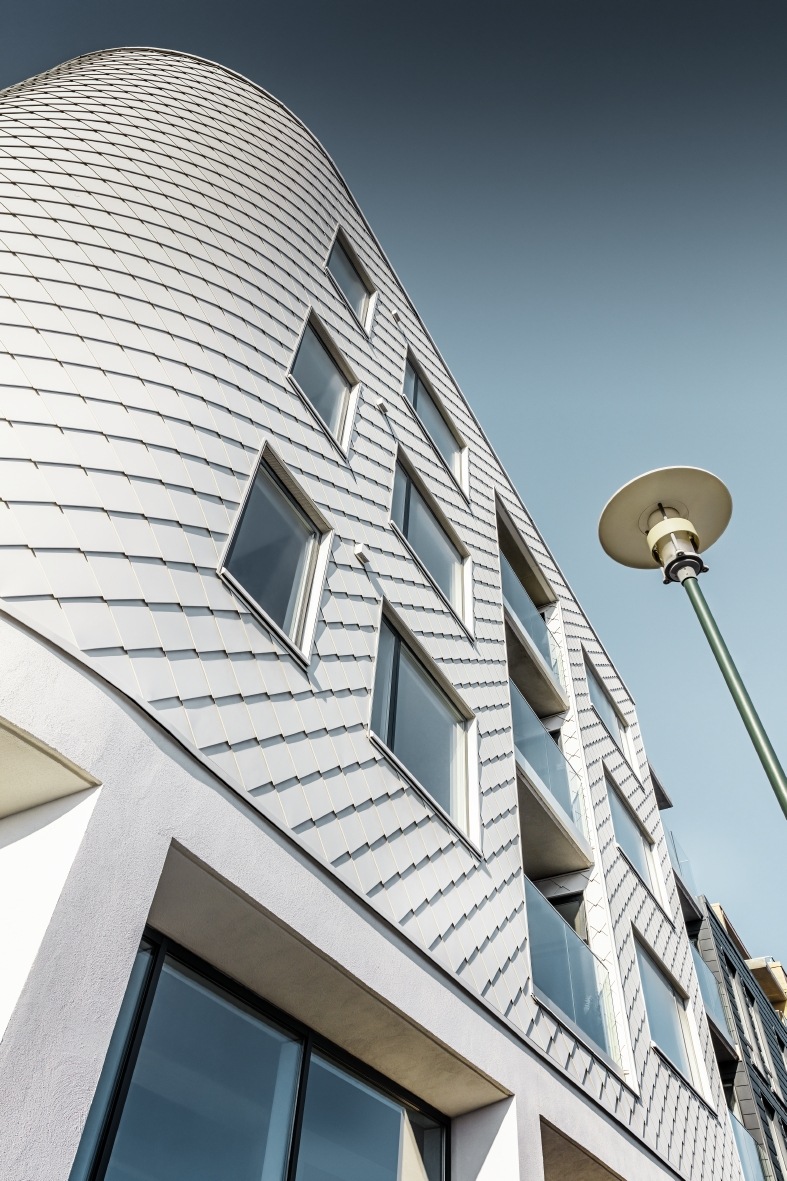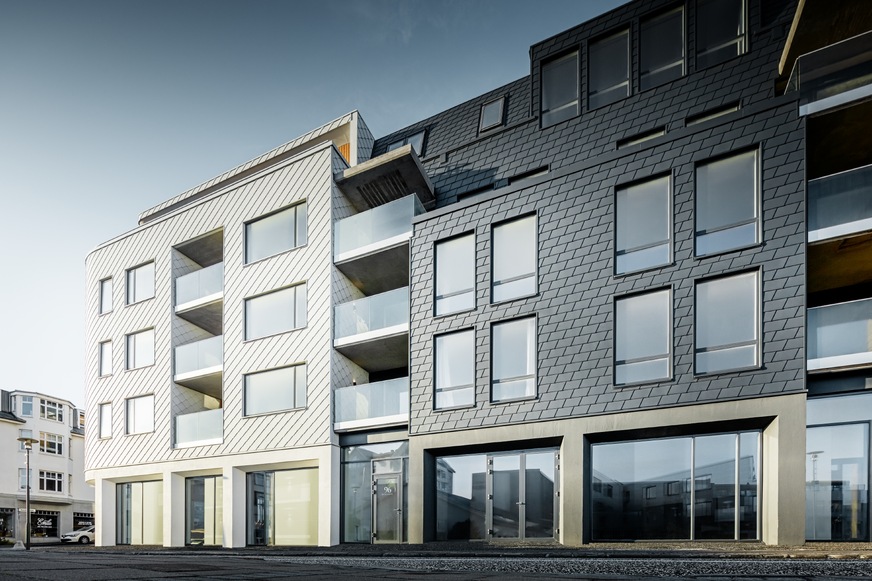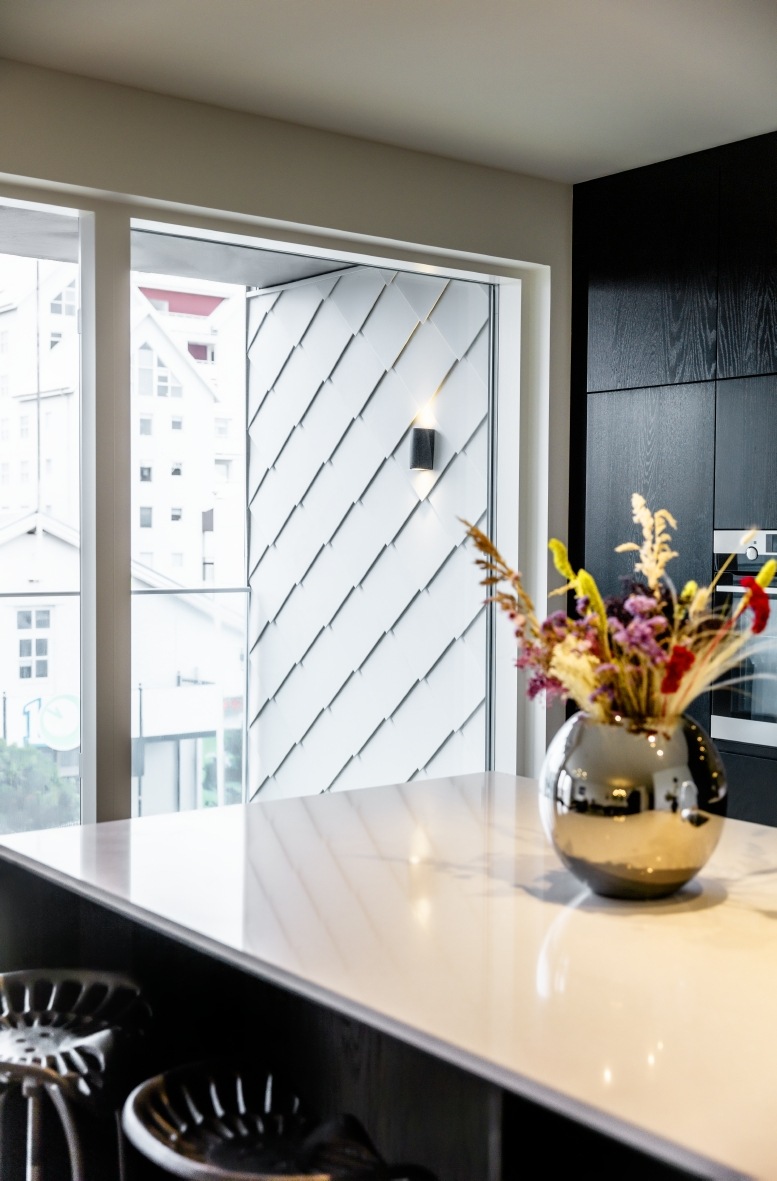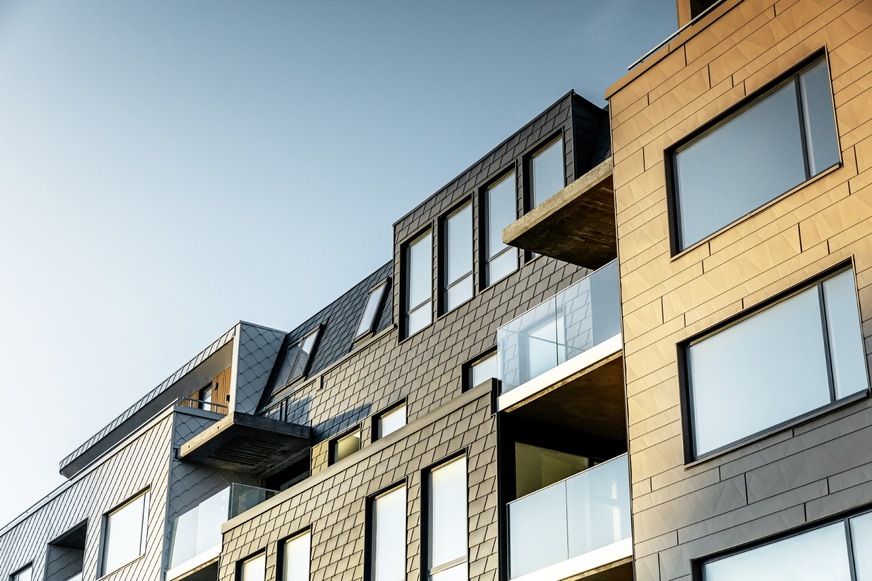101 Reykjavík—that’s the postal code for the city centre of the Icelandic capital- and the address of Tryggvi Tryggvason´s most recent work. Smack dab in the middle of the booming, lively city, to which more and more tourists flock every year. “The façade requires a stable and robust material for its operative use,” the architect says about his newest project and his initial concepts. The massive structure, which until recently was a car park and was designed to bring new life into the city’s centre with apartment units and a lively ground floor, boasts a façade of 2300 square feed.
The unique and atypical combination of colours and forms diminished the building’s imposing stature. “It reflects an interplay between colours and shapes,” says Tryggvason describing his concept, which initially reflected heavy earth tones—but that idea was quickly scrapped. “It was too much,” he emphasises, before explaining that he then decided on lighter and more inviting colours to remove the object of its weight. The object now sparkles in white and sand colour. “We created the cliff formations, which are formed from lava here, by using dark, almost black anthracite and vertically laid Siding.X,” says the architect who was especially inspired by the Siding.X-elements.
“The structure is reminiscent of when lava cools and breaks, which leads to the formation of six-sided surfaces,” says Tryggvason. The white, on the other hand, stands for snow. The rounded sections of the building, which were made with white rhomboids, was inspired by Iceland’s glaciers. Its structure is reminiscent of fish skin, while the sandy tones round out the idea. The shingles, however, stand out through their asymmetry. Three colours, three shapes. “The number three is a recurring theme in my concept,” says the architect.
Iceland is different
Tryggvason enjoys finding inspiration for his work in nature. The unusual beauty of his homeland is something he did not recognize until much later, however. “When I was young, I did not really take any interest in the surrounding landscape. It was just there,” says the architect, who has also worked on projects on the Faroe Islands, in Greenland, Denmark, and Israel. He is one of the many returnees of Iceland, as many natives go abroad to study or work, either to England, to the USA or to Denmark, and then even- tually return enthusiastically to their homeland. Just like Tryggvason, who after his years abroad fell in love with his homeland’s nature.
“One example, Denmark is flat and green, Norway has mountains and trees, but Iceland is different with a much more diverse flora,” he says. “I find the best ideas in nature,” says Tryggvason, who loves spending his free time on his snowmobile riding across the untouched landscapes blanketed in snow to the north of the island. “It’s kind of similar to flying in the sense that you can get anywhere and there are no predefined routes,” says Tryggvason about his second passion after architecture.
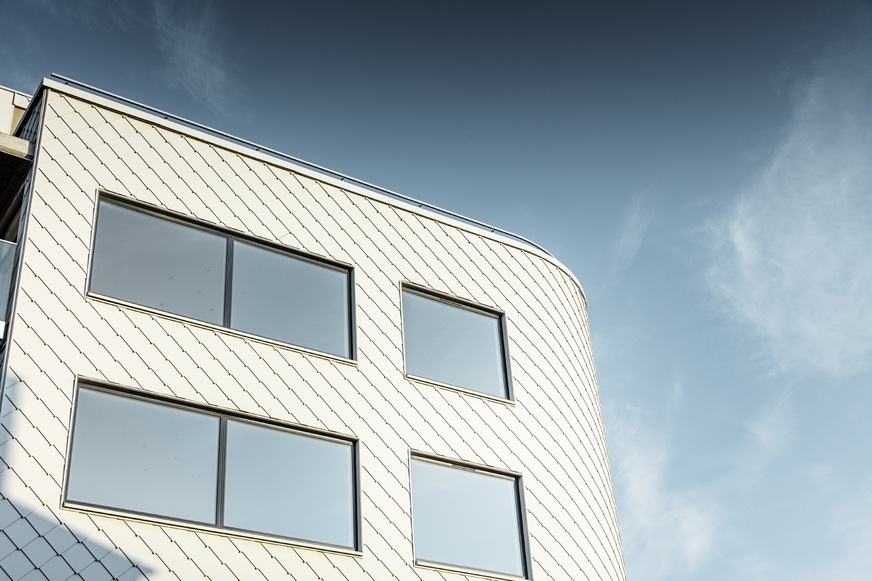
Prefa
Detours to a dream job
Creating homes is something Tryggvason dreamed of as a child, but his engineering studies and professional commitments in various countries occupied the majority of his time at the onset of his career. His areas of focus lay on sustainable, green energies, an area of expertise that continues to aid him in his current vocation. And that’s because sustainability is an essential aspect, even in Iceland, when creating new buildings.
After Tryggvason was able to work as an architect in one of his jobs, he began getting his feet wet, gaining experience, obtaining the pertinent degrees and certificates, before becoming a registered freelance tradesman along with a colleague. Their joint office, which is located in Iceland’s rough north, has worked on all manner of projects, ranging from summer homes to industrial buildings. Tryggvason is an all-rounder. His goal is to “create solid buildings, in which people happily live.” And he hopes to have achieved his goals in Reykjavik. The feedback he has received is decidedly positive. “Bad feedback generally is something not given—in that case, it’s usually just no feedback,” he says out of experience.
A building that meshes
A lot has changed for architects working in Iceland over the course of the past few years, and it would seem that new buildings are popping up on every cor- ner in the city. But the city administration is heavily involved to ensure that development is regulated. “There are a host of laws and rules,” he says. “Every year, there are new regulations on what is and what is not permitted. One year, doors must be 90 cm wide, the next 80 cm. It’s something you always have to be aware of,” says Tryggvason. For his latest project, he also was handed a host of guidelines and regulations by the city administration. “The city was determined to have a building that would mesh with the older and smaller surrounding houses.” And it’s something he achieved in three flying colours.
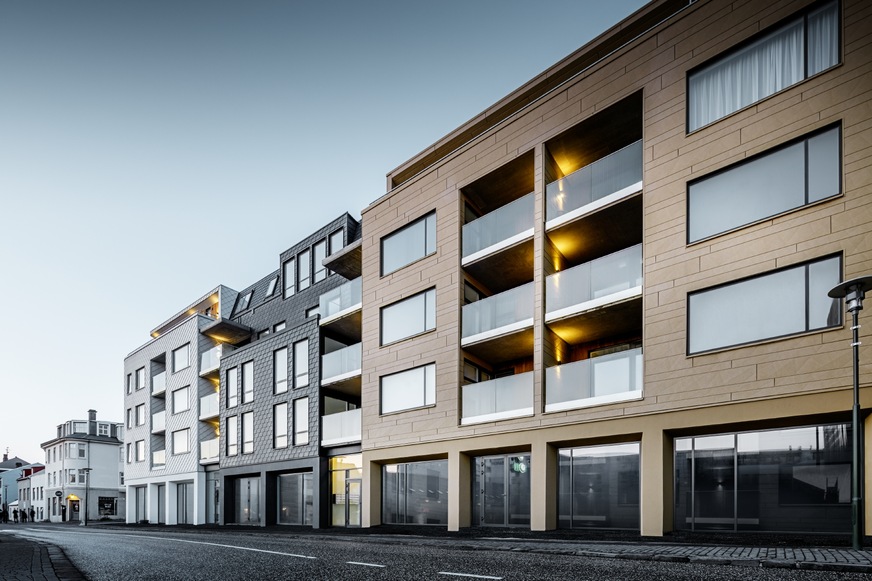
Prefa
The glacier of Reykjavík
A German in Iceland—Norberd Augner’s tinsmith company Dachbaukunst from Quedlinburg in the German federal state of Saxony-Anhalt ensured the perfect implementation of the large-scale project in Europe’s most northerly capital.
“I’m always up for an adventure,” Norbert Augner recalls his reaction to the inquiry from the far North to realise a project in the centre of the booming city of Reykjavik. At first, the experienced German tinsmiths were to train their local colleagues on how to handle the materials and what methods to apply. But soon the developer wanted the experts to take over the job. The transport truck—known as the “mobile tinsmith’s workshop”—was loaded and shipped to Iceland to have the usual tools on site. In a small local workshop north of Reykjavik, the tinsmiths were able to set up shop. All the preparatory work was done there. In the underground car park, a second workshop was set up for smaller tasks and impromptu work.
300 m² of PREFA façade were laid in the inner city of Reykjavík for the project, which was particularly attractive for the installation team due to the variety of colours and products. “It’s a play of colours and surfaces,” says the craftsman. The façade was designed in white, anthracite and sand colour with diamonds, shingles and Siding.X.
The Siding.X elements were not laid horizontally as usual, but vertically. Six to seven craftsmen were always on site. Every three weeks a new team would come in to take over. They stayed in a nice cottage and worked six days a week. The project was not completed as quickly and efficiently as the German craftsmen are accustomed to. In the end, a total of eight months went by between the planned start and completion. “In Iceland, the mentality is different than in Germany. We needed a little time to adjust to the mentality,” Augner emphasises. “We had no mainland connection, we had to have employment contracts approved by the authorities, it took some time for our transport truck to go through customs...”, says the founder and owner of Dachbaukunst.
Leaving a mark
The round street corner covered in white diamonds is particularly dominant. “This part of the building is inspired by a glacier. This way, Reykjavik now has its own glacier,” Augner proudly explains. “We’ve left our mark here. That makes me and my employees proud. This is something that brings us closer together.” Augner is very happy about this unique experience. Going back and forth between the two different societies inspired him, as did the natural surroundings which are both harsh and wildly romantic. “Every time I came back to Germany from Iceland, I told myself that I would not fall into the trap of adapting to the frantic pace of life again. However, this thought went down the drain after 20 minutes on the A10 autobahn,” he recalls with a smirk. He wouldn’t say no to further out-of-the-country jobs, but he also puts a great deal of enthusiasm and dedication into the projects in his home country.
Love of metal
Augner founded his company “Dachbaukunst” in 2009. He had previously worked in a restoration company for eight years, developing his “love of metal.” The master roofer then learned the tinsmith trade and fulfilled his dream of owning his own workshop. What began ten years ago with two employees is now a highly specialised and successful company with 16 employees.
“We have worked our way up year after year,” says Augner, who has made a name for himself especially in monument conservation. A major part of his work involves the renovation of large listed buildings: castles, churches and monasteries. “This enables me to view a build- ing from a more flexible point of view,” he underlines. This experience is what he can bring to the table when working on new buildings—just as he did in Reykjavik.

